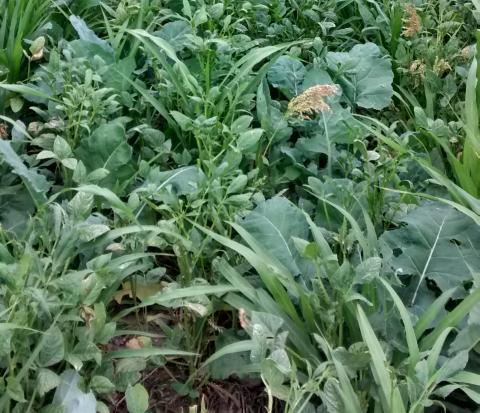Options for Forage Following Wheat
June 16, 2017
If you still have good moisture after wheat harvest, planting a forage crop may be a good option.
Cover Crop and Annual Forage Field Day June 29 near Sidney
June 5, 2017
A June 29 field day, Incorporating Cover Crops and Annual Forages into Cropping Systems, will be held at the University of Nebraska High Plains Ag Lab near Sidney. University specialists and researchers will discuss what they're finding from their research and lead guided tours of field trials. RSVP by June 19
Plan the Timing of Grass Hay Harvest
May 24, 2017
Native meadows will soon start growing rapidly and bromegrass is about to head out. Here are some tips to make your grass hay suitable for your animals.
Annual Forages and Windrow Grazing as an Alternative to Cash Grain Crops
April 18, 2017
The relationship between current grain prices and forage/pasture prices in western Nebraska is creating a scenario where forage crops may provide an economically viable alternative to a cash grain crop. From an economic perspective, at current market prices, 1.5 tons per acre of annual forage is competitive with cash grain crops in terms of generating gross dollars per acre.
Small Grain Annual Forages Following Soybean Production
December 2, 2016
This research brief looks at a three-year grazing trial addressing the question of what small grain is most suitable to plant after soybean to offer the best opportunity for grazing.
Value of Oats and Brassicas for Fall Forage
December 1, 2016
An overview of five experiments evaluating the use of winter-sensitive, cool-season species planted in mid-August after wheat or early September after corn silage harvest for grazing of fall-weaned calves during November and December.
High Quality Hay Still Brings Top Dollar
November 11, 2016
If you're sitting on some high-quality hay and planning to feed your livestock, consider whether the market adage to "Sell high, buy low" might offer some sage advise for the hay market too.
Student Research: Does the Grazing of Cover Crops by Cattle Compact Soil?
November 2, 2016
Undergraduate Rebecca Clay shares the results of her study on whether grazing cover crops contributed to soil compaction at four sites in west central and eastern Nebraska. Clay, an undergraduate student in the Iowa State University Department of Agronomy, conducted the study as part of a UNL Research and Extension Experiential Learning Fellowship in summer 2016.



